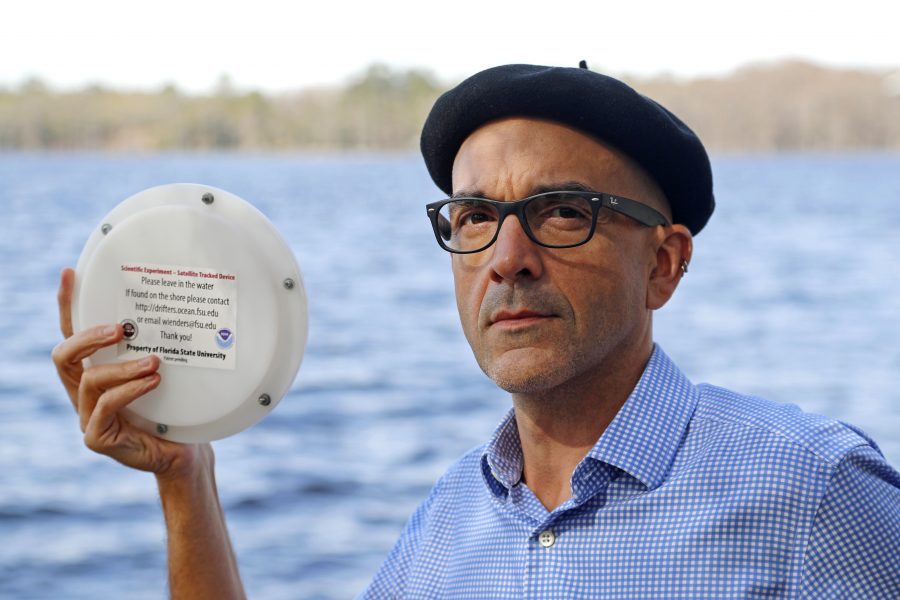FSU technology tracks the ocean current

Nicolas Wienders, an associate research scientist in the FSU Department of Earth, Ocean and Atmospheric Science,
invented Stokes Drifters to track and monitor the ocean currents at the surface
A Florida State University researcher has developed a new technology that can track the oceans’ currents and surface circulation.
Ocean currents play an important role in many everyday processes such as shipping, navigation, commercial fishing, recreational boating and safety. They also impact our climate, sediment transport, ocean ecosystems and animal migrations.
But the movements of ocean currents at the surface — also known as the Stokes drift — are exceptionally tricky to track.
Nicolas Wienders, an associate research scientist in the FSU Department of Earth, Ocean and Atmospheric Science, invented Stokes Drifters to track and monitor the ocean currents at the surface. Once deployed, these GPS-equipped, disc-shaped instruments can easily be tracked and help scientists determine the direction of ocean currents.
“This technology will provide insight on the impact that currents have on biological processes and map geographical areas that may negatively be affected,” Wienders said.
The drifters will transmit time, position and optional data streams such as temperature, salinity and acidity via satellite at programmable intervals.
By having the ability to track the ocean surface circulation, the Stokes Drifters can provide accurate information to state, federal and environmental agencies regarding the speed, location, and predicted course of harmful pollutants such as oil spills, plastic patches or contaminated river plumes to better protect ecosystems, aquatic life and mankind. The drifters also provide precious and unique data to help scientists validate their numerical predictions and forecasts, satellite current observations or coastal high-frequency radar current observations.
There are other versions of this technology on the market, but current drifters are much bulkier and unable to capture the subtle processes specific to the oceans’ surface. Furthermore, most current designs are far too sensitive to the effects of the wind.
“A drifter can’t float too high above the water or wind drag will interfere and alter the trajectory,” Wienders said. “It also can’t float too low below the surface or else the radio transmission will be compromised. Our Stokes Drifters solve these issues with their very thin design, allowing for GPS reception and satellite data transmission while minimizing wind drag and capturing the effects of the Stokes drift.”
To ensure the drifters will not be affected by flipping over from waves, Wienders installed GPS and satellite antennas on both sides. Internal accelerometers can even record and transmit information about the wave activity encountered.
This technology will help cities and states better prepare for situations that may endanger citizens and may be used during search and rescue operations at sea. Wienders and his team are now working on a new version of the drifter that could be deployed by plane or helicopter.
“One can never tire from looking at the ocean,” Wienders said. “With its ever-changing and temperamental nature, the ocean can only be understood for a few days at a time. I am excited to broaden that understanding.”

